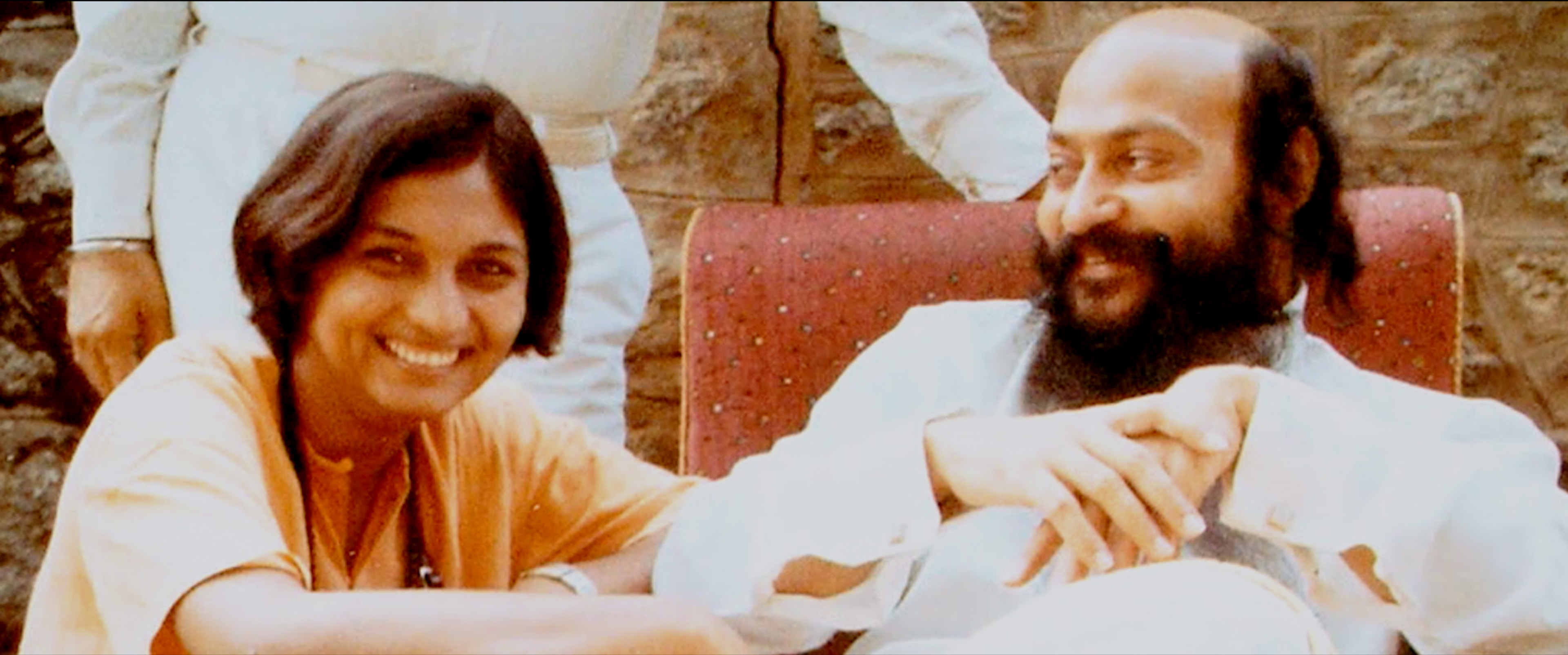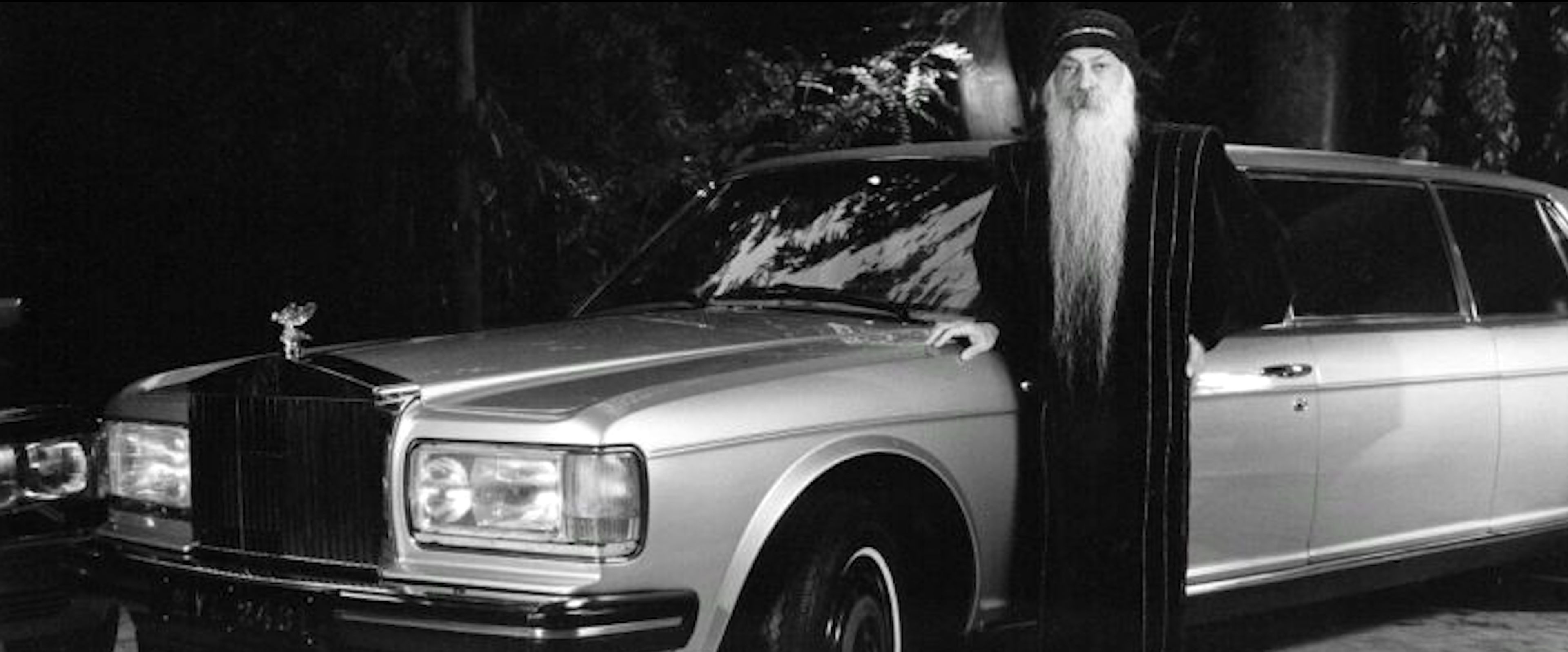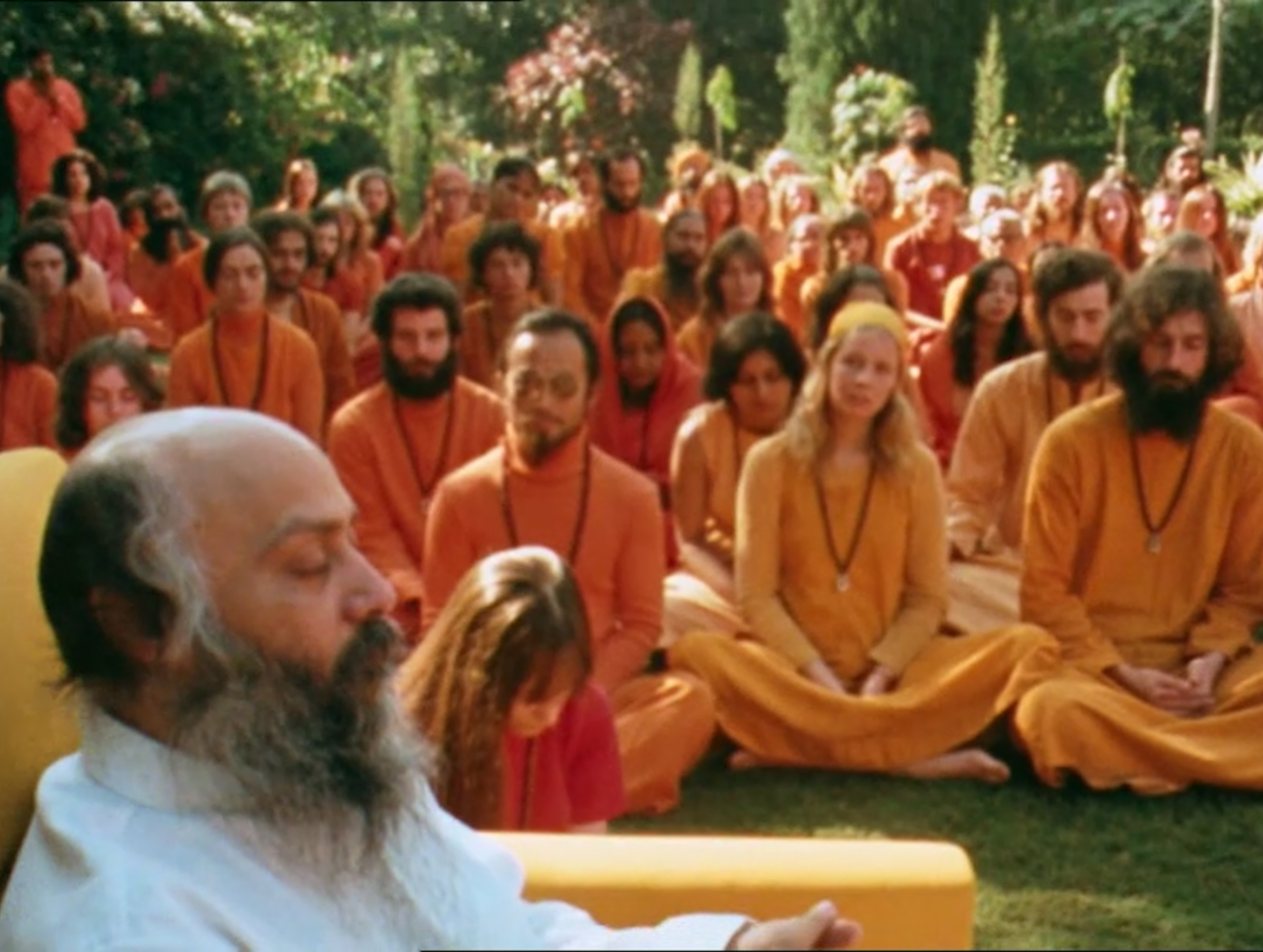
Imagine a band of refugees, pushed from their homes in the face of religious persecution, searching for someplace to carve a “promised land” from the wild, craggy landscape of North America. Together they build cabins and dam rivers, buoyed by their conviction that they’re doing sacred work. But these pilgrims — in their zeal and ambition — drastically underestimate the people already inhabiting the land they’ve come to colonize.
When this error becomes inescapably clear, they immediately elect to steamroll their opposition.Intent on manifesting their destiny, the commune leaders recklessly compromise their ideals. Negotiation and middle ground are ignored in favor of might. An ideological, physical, and biological war is waged. Evil is excused as a “means to an end.” The persecuted become persecutors.
Before long, the honey-tinted visions of utopia are lost forever.
The tale I’m retelling is, of course, the story of the Puritans arriving at what would later become the United States. But it does double duty as a plot synopsis for Netflix’s Wild, Wild Country –– the six-part documentary miniseries about the religious guru Bhagwan Shree Rajneesh, his arrival in the state of Oregon, the attempt by his acolytes to wrest control of sparsely populated Wasco County away from the farmers and ranchers living there, and his ultimate expulsion from the country after pleading guilty to immigration violations.
The fact that Wild, Wild Country feels like a microcosm of the foundation of our nation is due to the very nature of the story itself (and its telling). It’s a creation myth that morphs into a tale of a fallen utopia and, as such, could also easily be analogized to any number of things — the history of British colonialism; sacred texts of the three Abrahamic religions; the rise and fall of ’60s counterculture; the books Animal Farm, The Beach, and Lord of the Flies; the movie Avatar; and the foundation of just about every spiritual sect in human history. Our endless fascination with these archetypal stories is that they strike the same notes over and over, with unique details layered atop the basic “paradise built; paradise lost” structure.
To Wild, Wild Country‘s credit, it never points out its universal themes for the audience. Instead, the series relates its plot details without sentimentalizing. No one — not even the revered guru at the heart of the story — comes off as a saint. But no one comes off as pure evil, either. Are the ranchers of Wasco County homesteaders protecting their community or bigoted hicks? Is the Bhagwan a conduit for enlightenment or a master manipulator? Is his consigliere, Ma Anand Sheela, a fierce revolutionary facing bigotry or a power monger, ready to kill in order to retain control?
You could play out this exercise all day with the various characters from Wild, Wild Country. The Bhagwan’s lawyer, the state attorney general, the zealous media, the local police… none are perfect and all are punished.

In his review of Lady Bird, Vince Mancini marveled at how the movie’s specificity helped its message feel universal. By being particular with the details, it actually forged a deeper sense of audience involvement than the same movie with a more muddled point of view ever could have. So it goes with Wild, Wild Country. Its focus on the specifics of the Bhagwan’s failed utopia in Oregon creates endless connection points with the audience and leaves them free to draw their own “this show is a direct metaphor for _________!” conclusions.
I suspect that my personal connection to the series is closer than most but, with a story that touched so many lives and dominated the national news cycle in the mid-’80s, I can’t be sure. Still, it’s worth mentioning that this was the first big news “moment” I remember from my childhood; it occurred in my home state, just two counties away; my godfather embedded with Rajneeshees at their compound as a filmmaker for the local news (his archival footage is used heavily in Wild, Wild Country); and decades later, when I arrived in California at age 22, I was invited to live on a property that had previously been the Bhagwan’s last remaining commune. I often had to shoo the Rajneeshees latter-day followers off of the grounds on Saturday mornings.
And yet… the story had mostly slid off my radar until I saw the first trailer for Wild, Wild Country. It immediately ignited curiosity in me; a myth that I knew about but didn’t truly know. I had been a child when the Rajneeshees made national news and had no idea what my parents thought of them. After watching the teaser, I called my mom immediately.
“I liked them at first!” she said. “…Until Sheela started poisoning all the buffets in town.” Mary Bramucci will sympathize with your commune, but she has her limits.
The incident my mom is referring to is the “biological warfare” element of the story, one of the many twists that make this particular paradise lost narrative so riveting. It comes as the Rajneeshees are being pushed out of the state and their rights are being suppressed by an overzealous county clerk. How you view Episode two’s reveal that the commune’s residents created a bacteria in order to poison the locals just enough to make them too sick to vote depends on the lens through which you’ve viewed the sect in Episode one.
Personally, I felt torn. We like our open spaces in the Pacific Northwest and we don’t like cities crowding in where the country used to be. As the beloved local novelist and ’60s counterculture hero Ken Kesey writes in Sometimes a Great Notion, Oregon has “Elbow room for a man to be as big and important as he feels it is in him to be.” The Rajneeshees trying to build a city of 50,000 on a massive ranch in the town of Antelope, whose previous population was roughly 50, was obviously going to annoy locals with this governing ethos. But those of us from Portland or Eugene also tend to be liberals and the endless “I don’t want these people in our town” soundbites from Wasco county residents didn’t sit well with me.
Win McCormick — a beloved Oregon writer, founder of Tin House Magazine, and an in-person chronicler of life at the Rajneeshee compound — argued recently in New Republic that the entire fight was over legal land use. But the documentary itself makes it clear that this was, in fact, about ideology over everything. Land use doesn’t lead to hotels getting firebombed or plots to kill a presidential appointee. It doesn’t give rise to covert surveillance or an arms race.
The truth is that the locals of Antelope and Wasco County didn’t like how the newcomers dressed, prayed, ate, worshiped, or made love. In 2018, most people featured in the archival interviews feel like they were recently extracted from Trump country. The word “fear” is worn thin from overuse as locals try to put into words how the Bhagwan and his followers make them feel. But the actual reasons for this fear are left nebulous. No one but Sheela ever points to the deeper origins of this paranoia: xenophobia.
When the battle over the Rajneeshee ranch turns violent, Sheela, in particular, proves herself a formidable foil for the rough and rowdy locals. But the first wave of panic and its resulting drama — the various inciting incidents pushing toward the climax of the series — all seem borne out of a wariness of white locals to accept these newcomers, led by a foreigner with dark skin.
This is deeply ironic when you consider that Oregon is a land where bucking the system is adored. Why was the fierce independence that the state is known for so reviled when locals identified it in the Sannyasins? If anything, Wild, Wild Country reveals that the Oregonian hero worship for iconoclasts in the 1980s was limited by race, creed, and country of birth.
Thus far, I’ve avoided using the word “cult” in this piece. If ever in the history of religion and spiritualism was a word weaponized, it’s that one. In Wild, Wild Country, newscasters, reporters, and locals perpetually pepper their sentences with it when referring to the Rajneeshees. Many times it’s called a “sex cult” a claim which seems to have literally zero verifiable bases — besides to cast aspersions on the decidedly sex-positive attitudes of the commune’s leaders and residents.
The problem with the word cult is that’s it’s defined by those in power and measured against their definitions of normal (as is the brand of sex implied in the “sex cult” designation). Why anyone would call the Bhagwan and his followers a cult in the sense that Jonestown and the Manson Family were cults is beyond the scope of Wild, Wild Country. The “reds” — as they’re often nicknamed for their propensity to wear red, orange, and magenta — are allowed to come and go as they please and aren’t “controlled” by their guru in any measurable sense. In fact, the Bhagwan himself is often heard sloughing off the mantle of “master.”
Yes, there was criminal activity at both the ranch in Oregon and the ashram in Pune, India, but it was highly concentrated among a select few. If covert criminal leadership is cause for dubbing something a cult then every religion ever is a cult. Also… yes, every religion ever is a cult — particularly since the true definition of “cult” seems to be “a religion which the people telling the story aren’t conditioned to like.”
It’s also ironic on multiple levels to watch the Christians of Antelope, Oregon calling Rajneeshees as a sex-crazed cult. First, because every extant account of Jesus paints him as the ultimate communal-living, prostitute-forgiving hippie. Second, it was accusations that he was running a cult that got Christ killed. Third, the Bhagwan was smeared for being a money-loving, sex deviant in an era when Benny Hinn and Jimmy Swaggart — the prostitute-hiring preacher notorious for his “I have sinned” speech — were at the height of their fame.

With the gift of hindsight, it’s a rare person who would consider the Rajneeshee’s known attitudes toward sex to be toxic. The community members are open, often polyamorous, rarely child-bearing and highly sexual — but there are no clear accounts of rape, sadism, or sex abuse at the ranch. Instead, what a close viewing of Wild, Wild Country reveals is a deep stigmatization of orgies, sex with multiple partners, and non-traditional relationships on the part of the ’80s media. The headlines above show that those stigmas still linger.
The only fathomable reason to call the Bhagwan and his acolytes a sex cult would be that their interpretation and relationship with sex don’t jibe with the Puritanical tradition that still looms large in much of American life. This is the backdrop to most of the action in Wild, Wild Country: The “rightness” and “wrongness” of belief patterns are judged through the prism of ’80s-era Christianity in conservative Central Oregon. (McCormick points out in New Republic that there were accounts of violence in therapeutic settings at the Bhawgwan’s first commune in Pune, India — but few realize the popularity that Gestalt, Encounter, and Primal therapies had in the late ’60s and early ’70s. The idea that they surfaced in a community of Westerners following an Indian guru famous for mashing up Abraham Maslow’s concept of self-actualization with radical therapeutic practices and Eastern religion isn’t exactly a shock.)
None of this is to say that the Rajneeshees are perfect. Not even close. Watching Wild, Wild Country — even with a strong bias in their favor, which I naturally felt thanks to my personal connections and politics — reveals an organization that is willing to poison and potentially kill people to achieve its means. But the language used by the media is so deeply biased, with such antiquated, puritanical, xenophobic prejudices at their root, that the interesting ideological conversations about the actual beliefs championed by the Bhagwan are lost.

That which cometh hereafter speaks of the breaking up of things, and shows how joys and pleasures that are dead and gone can never be set upon their feet to walk again.
–Howard Pyle, The Merry Adventures of Robin Hood
Wild, Wild Country ends with a breaking up of things. The commune crumbles and the story draws to a close without asserting any significant conclusions about its various subjects. That’s exactly how it ought to be. Getting a bead on whether the people featured in the series are good or bad is — as each episode highlights — impossible to extract from the viewer’s individual ideology.
Personally, I felt a twinge of sadness to see the Bhagwan’s communes laid to waste. I’m always sad when I see spiritual hedonists ground down by a world that seems to have a bizarre vendetta against spiritual hedonism. Other viewers surely watch the very same closing sequence and say “Good riddance.” While I may not agree with that response, I do understand it.
This is the magic of Wild, Wild Country: It reminds us, above all things, that our stories are rarely full of pure good guys and bad guys. There are far fewer true villains and true heroes in this world than we’d like to think. The tale of the Rajneesh commune in Oregon is a tale of regular people (and some extraordinary ones) in all of their beautiful, violent, loving, greedy, generous, selfish, ecstatic, manipulative, messy glory. And that’s what makes it so good.






